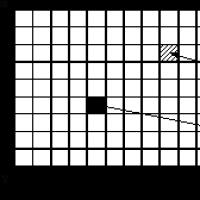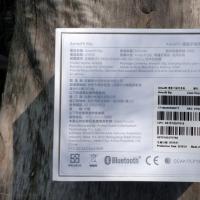How to split or merge hard disk partitions. How to merge hard disk partitions in windows? What to do before deleting
All instructions are suitable for both traditional hard disk drives (HDD) and solid state drives(SSD).
Recall: a physical disk is displayed in the system as virtual volumes, they are also called local disks or partitions.
How to change disk partitions in Windows
By regular means
In Windows, you can merge drives without third-party software, but this method has an important drawback. You will lose all data on one of the merged partitions. That's why important files you must first move from it to another section or to a third-party media.
The process of merging local drives is a two-step process. First, you completely delete one of them along with all the contents, then give the space thus freed up to the second disk.
You will need the standard Disk Management utility. To run it, use the combination Windows keys+ R, enter the command in the window that appears diskmgmt.msc and click OK. The hard disk partitions will be displayed at the bottom of the Disk Management window.
After launching the utility, right-click on the drive you are about to erase (for example, the conventional drive D) and select "Delete Volume". This cannot be done with the system volume on which, since the procedure destroys all files stored in the partition.

Now right-click on the adjacent partition (conventional drive C) to which you want to transfer the freed space and select "Expand Volume".

When the Volume Expansion Wizard opens, click Next twice. As a result, the selected partition (in our example - C) will receive the entire volume of the deleted one.
Using third-party programs
There are free third-party software that makes managing local drives a lot easier. For example, MiniTool Partition Wizard not only allows you to quickly merge volumes, but also easily resize them. At the same time, it saves all data. But if you have important files on your computer, make them anyway - just in case.
So, to merge disks using MiniTool Partition Wizard, start the program and click on the volume (let it be C) to which you want to attach another partition (conditional D). Select the Merge option from the context menu.

In the window that opens, click on the same section (C) and click Next.

Now click on the section (D) that you are going to attach to the one already selected. A field with the name of the folder will appear in the lower half of the window: merged_partition_content... The program will create it on the target partition and copy all files from the remote there. Rename this folder if you like. Click Finish.

Click Apply in the left corner of the toolbar for the changes to take effect. If the program asks you to restart your computer, click OK and wait for Windows to restart. As a result, the explorer will display a disk equal in size to the two combined partitions.
If your goal is not to merge disks, but only to increase the size of one of them (say, D) at the expense of the other (let it be C), this can be done in two simple steps... First you need to reduce, and then transfer the vacated space to the second.
To reduce the size of a disk (C), select it in the main menu of the MiniTool Partition Wizard and in the left pane click on the Move / Resize Partition button. In the window that appears, move the slider so that the number next to the Unallocated Space After parameter corresponds to the volume by which you want to reduce the selected section. Confirm the change.


Click Apply on the top panel and wait for the program to redistribute the entire volume. This may require a reboot.
If you have a Mac, you will need to manage your drive volumes. preinstalled program"Disk Utility". It's in the Finder menu → Applications → Utilities. Be sure to back up important files before manipulating discs.
By running " Disk Utility", In the left pane, select the hard disk, the partitions of which you want to edit, and click on the" Partition into partitions "button.

A window will appear on the screen in which you can merge the selected volumes or resize them. The interface of the utility is very intuitive: it is displayed in the form of a pie chart, and its sections are in the form of sectors.

To merge sections, you need to delete one of them first. To do this, select it and click on the minus below the diagram. Remember that all his data will be erased. After that, when an empty sector appears in place of the deleted partition, expand any adjacent volume by dragging the cursor over its border. And to redistribute the sizes of volumes, just move the boundaries of the corresponding sectors.
When you have made all the necessary settings, click "Apply" and wait for the changes to take effect.
The question of how to combine two disks into one is one of the most frequently asked among computer users. This can be useful in many situations, including even moments associated with setting a single file system for all partitions, converting GPT or RAW format that the operating system may not accept, installing software that requires a lot of disk space, etc. the user can be offered two main methods of combining, which will be further discussed in as much detail as possible. The proposed solutions work equally well when performing such actions with logical partitions, and when working with RAID arrays, when two or more independent hard drives are installed on the computer.
Benefits of combining hard drives or partitions
It goes without saying that the first and main factor influencing the adoption of a positive decision in favor of merging partitions is the increase in the available disk space on one disk, which is extremely necessary when installing some programs.
On the other hand, as already mentioned, if the disks or partitions are installed different types file systems, quite often you can observe problems with the installation of certain types software... Bringing them, so to speak, to a common denominator, eliminates the problem entirely. Finally, if there are unreadable RAW partitions or GPT format for hard drives with a volume of more than 2 TB, which may not be perceived by the operating system, such a tool is simply irreplaceable.
Combining options
Now a few words about how to merge two disks into one in Windows 7 and above. First, you need to decide in what way the sections will be merged. First of all, we can highlight the ways of combining with the loss of information or with its preservation. The second is the use staff resources system or third-party software.
It should be said right away that the solution to the question of how to combine two disks into one, using the built-in Windows toolkit for the safety of data that was originally located in one of the partitions, does not imply (this is not provided at all). Therefore, before doing such things, all information from the partition to be deleted (and it will indeed be deleted, and only then attached to the main disk or partition) must first be transferred to another partition or to removable media. As it is already clear, about working capacity installed programs and there is no need to say. When solving the problem of how to combine two disks into one, but so that both the information is preserved and the applications work, it is necessary to use additional third-party tools. They will be discussed separately.
How to combine two disks into one in Windows 7 and higher versions by standard means?
To begin with, let's look at the system's own tools. This is the disk management section. It can be accessed through the administration menu, but it's easier to use the Run console, in which you need to write the diskmgmt.msc line.

Here you select the partition at the expense of which you want to merge, and through the RMB menu, the item for deleting the volume is called. The system will immediately warn you that all information on the selected disk will be deleted. We agree.

We repeat a similar operation, but for the section. After that, the so-called unallocated area will appear.

Now you need to use the RMB on the partition to which the attachment will be made, and select the volume expansion line.

At the stage of selecting disks, most likely, free attachable space will be immediately added to the list. If this does not happen, you should use the add button yourself. After that, the continue button is pressed, and in the next window - the end. If you look at the state of the disks and partitions at the end of the operation, you can see the increase in space on one of the partitions at the expense of the other.
How to combine two disks into one using third-party programs
You can use and third party utilities that look much more powerful than the system's own resources. This includes software packages like Partition Assistant from AOMEI, Disk Director from Acronis, Partition Master from EaseUS and many others.

Let's take a look at the merge process based on the last mentioned utility. For example, we need to merge drive E and drive F, but so that after that there is only one partition E. In the main window Partition Manager, use the Merge button, mark the indicated disks (partitions) with flags and click the "OK" button. After checking the merge, the process will be in the pending status. Click the Apply button and confirm the action. After that, the merging process will begin.

When it finishes, only one section (E) will be visible in Disk Management. Explorer will display two hard disk in one hard drive or partition. Only the F drive in the E section will be shown as a local directory (Local Disk F) with all the information that was previously present on it.
Brief conclusions
As a result, it can be noted that if the user needs a quick merge, and on the attached disk or partition is critical important information no, you can use the system tools. If data storage is mandatory, you will need third party programs... And further. Please note that if there is a second operating system it will not run on combo drives.
If you have one or more hard drives, and they are divided into several logical sections, then perhaps it makes sense for you to make one or two of them. On one we will have the system, and on the other the rest of the files.
So in Windows there is such a function that allows you to combine partitions hard disk without installing any programs separately. We will analyze how this is done using the example of the "Seven". But, I should warn you that all data on the disks that will be used when working for merging will be deleted.
Let's go to Start and open Control Panel.
Select the view type Small icons and open Administration.



Before you get down to business, you need to learn a couple of points. Firstly, you cannot simply take and merge two partitions of a hard drive here. To perform this operation, you need to do slightly different steps. Namely!! We need to first delete the sections that we want to glue with others, and then create a new, one and only one out of them.
Naturally, all data on the deleted partitions will be lost, so save it to another disk beforehand.
By the way, system disk, on which Windows is installed, we naturally do not touch, we can only transfer the necessary data to it.
Merging hard disk partitions
Let's consider all this with an example.
Open on the left Disk management... And now we see our disk, and opposite it all the logical partitions.
To make unallocated space appear, I delete the partitions I do not need, in my case it is the drive (G :) and (Z :). Right-clicking on the section, select the Delete volume item.

And at this step, we confirm that we are aware of the deletion of all data on this section by clicking Yes.

The two partitions I deleted - disk (G :) and (Z :) merged together. Now they represent unallocated space (180 Gigabytes), we need to create a new volume from them.
We click on the free gigabytes with the right mouse button and select the item Create simple volume.

We follow the volume expansion wizard by simply clicking the "Next" button.

Now we see in front of us the size of the available space, which we got by deleting other partitions. To create a new disk, we indicate in the lower field maximum amount available megabytes. In my case, this is 184468 MB. Click Next, give it a letter, Next again and Finish.
To make one of two local disks or increase the disk space of one of the volumes, you need to merge the partitions. For this purpose, one of the additional partitions is used, into which the drive was previously partitioned. This procedure can be carried out both with the preservation of information, and with its deletion.
Perform merge logical drives you can use one of two options: using special programs for working with drive partitions or built-in Windows tool... The first method is more priority, since usually such utilities transfer information from disk to disk when combined, but the standard Windows program deletes everything. However, if the files are unimportant or missing, then you can do without using third-party software... The process of how to combine local drives in one on Windows 7 and newer versions of this OS, it will be the same.
Method 1: AOMEI Partition Assistant Standard
This free disk partition manager helps you merge partitions without losing data. All information will be transferred to a separate folder on one of the drives (usually the system drive). The convenience of the program lies in the simplicity of the actions performed and intuitive clear interface in Russian.

After the merge is complete, you will find all the data from the disk that was attached to the main one in the root folder. It will be called X-drive, where X- the letter of the drive that was attached.
Method 2: MiniTool Partition Wizard
The program is also free, but it has a set of all the necessary functions. The principle of working with it is slightly different from the previous program, and the main differences are the interface and language - MiniTool Partition Wizard does not have Russification. However, basic knowledge is enough to work with it. of English language... All files will be migrated in the process of merging.

Look for the transferred files in the root folder of the disk that was merged with.
Method 3: Acronis Disk Director
Is another program that can merge partitions, even if they have different file systems. This opportunity, by the way, cannot boast of those mentioned above. free analogues... In this case, user data will also be transferred to the main volume, but provided that there are no encrypted files among them - in this case, merging will be impossible.
Acronis Disk Director is a paid, but convenient and multifunctional program, so if you have one in your arsenal, you can connect volumes through it.

After rebooting, look for files in the root folder of the disk that you designated as the main one
Method 4: built-in Windows utility
Windows has a built-in tool called "Disk Management"... He knows how to perform basic operations with hard drives, in particular, in this way you can merge volumes.
The main disadvantage of this method is that all information will be deleted. Therefore, it makes sense to use it only when the data on the disk that you are going to attach to the main one is missing or not needed. In rare cases, carry out this operation through "Disk Management" fails, and then you have to use other programs, but such a nuisance is rather an exception to the rule.
- Press the key combination Win + R, type diskmgmt.msc and open this utility by clicking "OK".

- Find the section that you want to join to another. Right-click on it and select "Delete volume".

- In the confirmation window, click "Yes".

- Volume deleted partition will become an unallocated area. Now it can be added to another disk.

Find the disk you want to enlarge, right-click on it and select "Expand Volume".

- Will open ... Click on "Further".

- In the next step, you can choose how much free GB you want to add to the disk. If you need to add all the free space, just press "Further".

To add to a fixed size disk in the field "Select the size of the allocated space" indicate how much you want to add. The number is indicated in megabytes, taking into account that 1 GB = 1024 MB.
- In the parameter confirmation window, click "Ready".

Result:
Merging partitions in Windows is a very simple procedure that allows you to effectively manage disk space... Despite the fact that the use of programs promises to merge disks into one without losing files, do not forget to do backup important data - this precaution is never superfluous.
Good afternoon! For those PC users who crashed their HDD into sectors, let's talk about how to combine partitions hard disk... For example, I merged the partitions because I have very little space on the C drive. When I start watching movies online, the entire movie is loaded into the cache and the hard disk memory becomes smaller. Well, let's already tell you what and what)
What is the advantage of dividing a disk into parts?
- each of the sections can contain a separate file system either the distinct cluster size;
- each disk partition is separate and is not affected by operations performed on other sectors of the disk;
- this is the ability to save data even after reinstalling the operating system by separating system files from custom;
- multiple hard disk partitions allow you to install more than one operating system.
What is a hard drive partition? This is a separate part of the drive, which allows you to more conveniently and efficiently use the disk capacity. Frankly, sometimes this creates some problems.
That is why today I will show you how to merge hard disk partitions. For this we need special program otherwise it will not be possible to merge the sections. One of these programs is the EaseUS Partition Master Free program. It is completely free and understandable.


As soon as the merging process is over, you will see the main program window in front of you, where the sections you have selected have already been merged. But this is still a long way off.

In time, it goes from several minutes to several hours. It all depends on the number of sections and their size. The program will display a message about the completion of the merging in the form of a pop-up window. 
The "My Computer" window will display new section, which will combine all the previous sections, as well as the files and folders created in them. Its volume will be equal to the total volume of all combined sections. And here is a list of alternative programs for merging hard disk partitions:
- Acronis Disk Director,
- Paragon Hard Disk Manager,
- Norton Partition Magic,
- [email protected] Partition Manager etc. The only "but", most of them are paid programs.
Finally, I invite you to subscribe to new blog articles. To do this, enter your email at the end of the article and I will send new articles to you by mail.
So, now you know how to combine hard disk partitions into one. I would be glad if I helped you understand this issue, and if something did not work out - ask your questions in the comments. I wish you all good health and wellbeing!
From Uv. Evgeny Kryzhanovsky
Post navigation
: 12 comments
- Badrudi
Hello Eugene. Thank you for the article. Let's try to combine if necessary. although I have a different problem now. How to clean your hard drive thoroughly.
- Oleg
Hello Evgeny! I have a question: how to divide a hard drive into several parts. Initially, only the C: drive is installed, on which the operating system sits. I am not strong (yet) in computer affairs, but I think I can independently solve this issue with your help. All the best!
- Oleg
Good afternoon, Eugene! Unfortunately, I have not found an article on your blog that interests me. Could you please indicate a more accurate title of the topic, which reveals the answer. I am currently working from a tablet, perhaps for this reason I cannot find what I need. Thank you in advance!
- Oleg
Hello Evgeny! Yes, I had a question how to split a hard drive into two or more. But I have already done it on my own. By the way, the same program is used that you suggest for combining the disc. Good luck! And good luck!
- Petr Firsov
 How to update iPad: instructions
How to update iPad: instructions How Do Not Disturb mode works on iPhone
How Do Not Disturb mode works on iPhone Nokia 3310 when it came out. How they find us
Nokia 3310 when it came out. How they find us History of computer graphics in Russia 1 history of development of computer graphics
History of computer graphics in Russia 1 history of development of computer graphics Complete order: How to organize icons on a smartphone Complete order: How to organize icons on a smartphone
Complete order: How to organize icons on a smartphone Complete order: How to organize icons on a smartphone Xiaomi Huami Amazfit Bip is the best smartwatch without any but even if
Xiaomi Huami Amazfit Bip is the best smartwatch without any but even if What is Jailbreak and what is it for?
What is Jailbreak and what is it for?